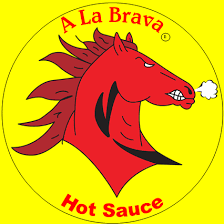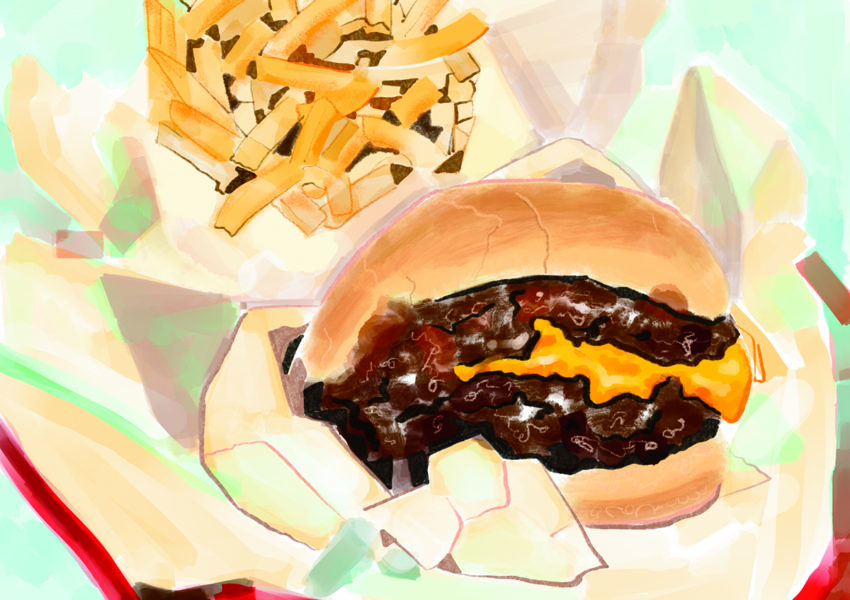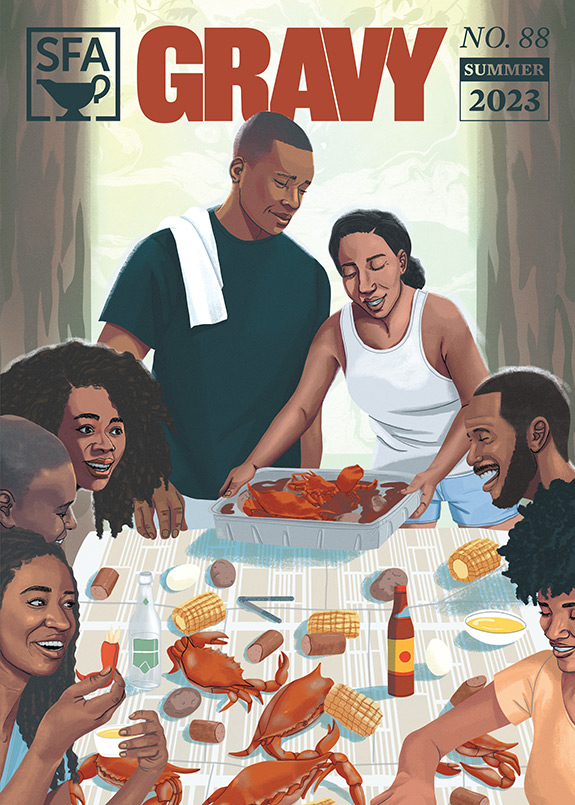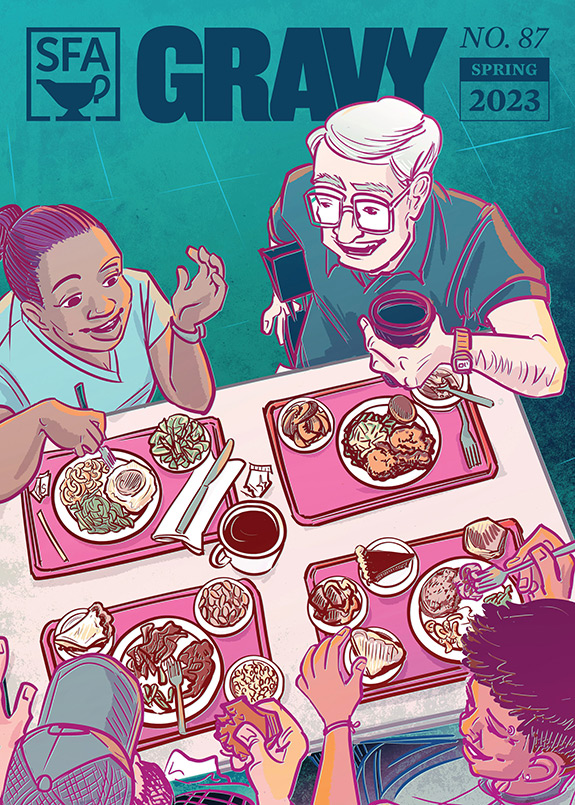This piece first appeared in the winter 2015-16 issue of our Gravy quarterly. The author, Gustavo Arellano, is the editor of OC Weekly and the author of Taco USA: How Mexican Food Conquered America.
Join or renew your SFA membership to receive a subscription to Gravy in print. Thanks to SFA members, whose support helps make Gravy possible.
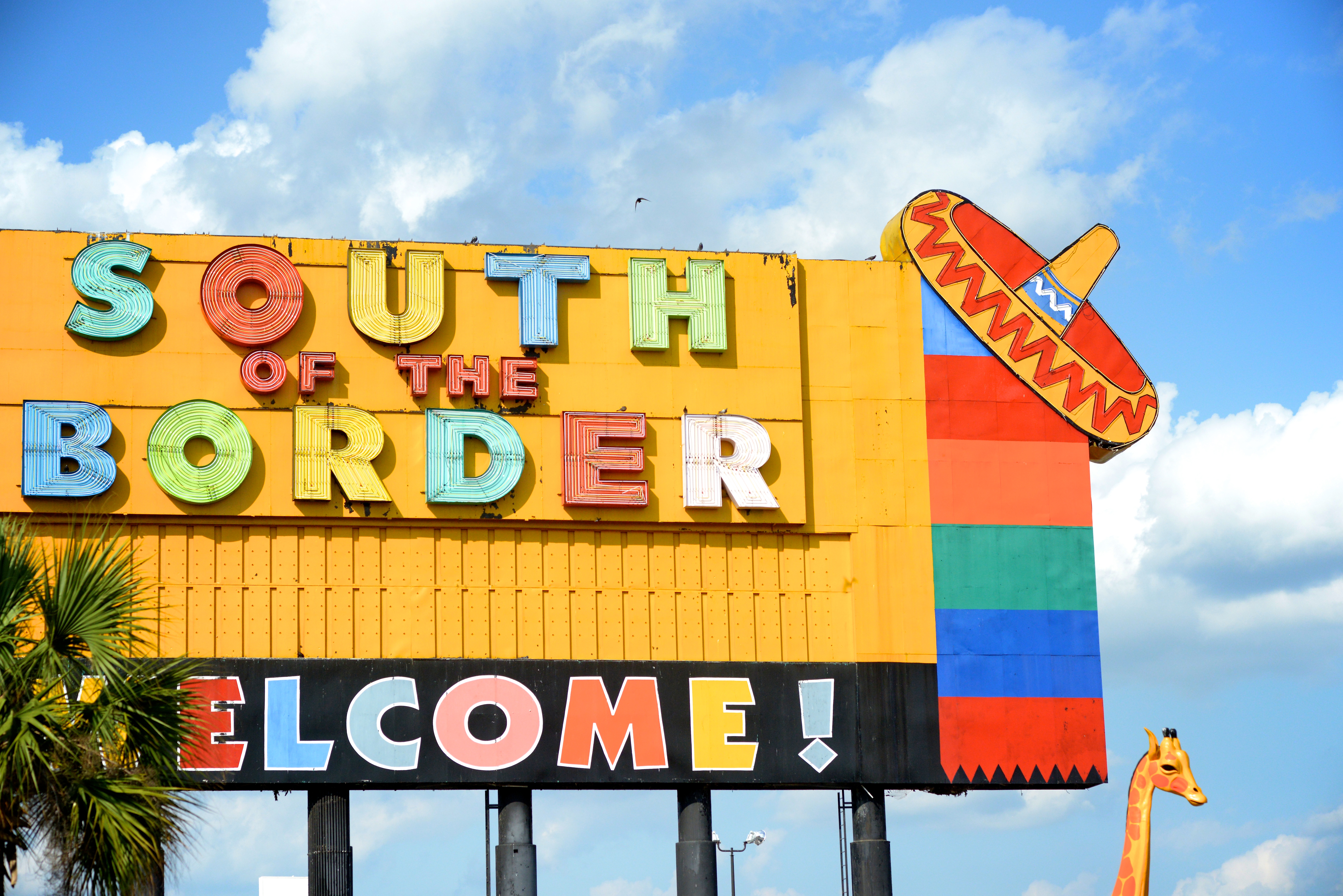
Sombreros Over The South
What lies beneath the happy hat
by Gustavo Arellano
Even though I haven’t held it in nearly fifteen years, I can easily picture the sombrero my father wore as an adolescent. It hangs in the bedroom of his childhood home in the Mexican village of Jomulquillo, Zacatecas, redolent of tilled earth and ganado (livestock), its straw brim slightly frayed but sturdy. The sombrero is a reminder of my family’s agrarian roots, the life my ’apa left behind. That’s what sombreros historically represented for Mexicans: markers of proud campesinos or charros (our archetypal men on horseback) who reveled in the rewards of a hard day’s work.
In los Estados Unidos, Americans have warped them into something quite different. Here, sombreros are exclusively happy hats: permission for the wearer to transform into a one-person party. Fans of Mexico’s soccer team flaunt them during international matches. Costume stores can barely keep them in stock during Halloween or Cinco de Mayo. Late-night hosts wear sombreros for comedy sketches, tipping their you-know-what to the buffoonery to come.
Here’s the funny thing, though: Stateside, I rarely see a Mexican wear one. Outside of folkloric dance performances, soccer stadiums, or mariachi shows, we favor tejanas (Stetsons) for everyday wear. We give the sombrero the respect it deserves. It’s headgear for a certain place and time—like revolutions, for instance, or to serenade a señorita in the moonlight.
I’ve noticed the prevalence of sombreros in the South ever since my first visit. In 2007, the kind students who hosted me at the University of Memphis decorated a lectern with a sombrero featuring more colors than a bag of Skittles. I’ve seen them on highway signs advertising Mexican restaurants on I-40, I-75, and U.S. Route 72, the highway that crosses northernmost Alabama and Mississippi. Spartanburg, Russellville, Danville, Charlotte: My travels through deltas, hollers, swamps, and mountains have been a Johnny Cash song come to life—if the Man in Black had accessorized with a sombrero.
Southerners just can’t seem to get enough! In October, a photo of University of Louisville President James Ramsey and his staff wearing sombreros and shaking maracas at a Halloween party went viral, prompting an apology. That followed Clemson University offering its own mea culpa after cafeteria workers served Mexican food while wearing sombreros. South Carolina is obsessed with the damn hat. In her 2012 book, Sombreros and Motorcycles in a Newer South: The Politics of Aesthetics in South Carolina’s Tourism Industry, P. Nicole King examined the notorious sombrero haven South of the Border, a square mile of fiesta off I-95 in Dillon, just across the line from North Carolina. Towering over the roadside kitsch is Pedro, a 77-ton, 100-foot-tall Mexican wearing—yep—a sombrero. Here, curious visitors can eat at a sombrero shaped restaurant, book their wedding at the Top Hat Club, or climb up the 200-foot Sombrero Observation Tower to take in views of the Carolina countryside. It’s lit up in neon at night, hanging over the horizon like a UFO ready to descend.
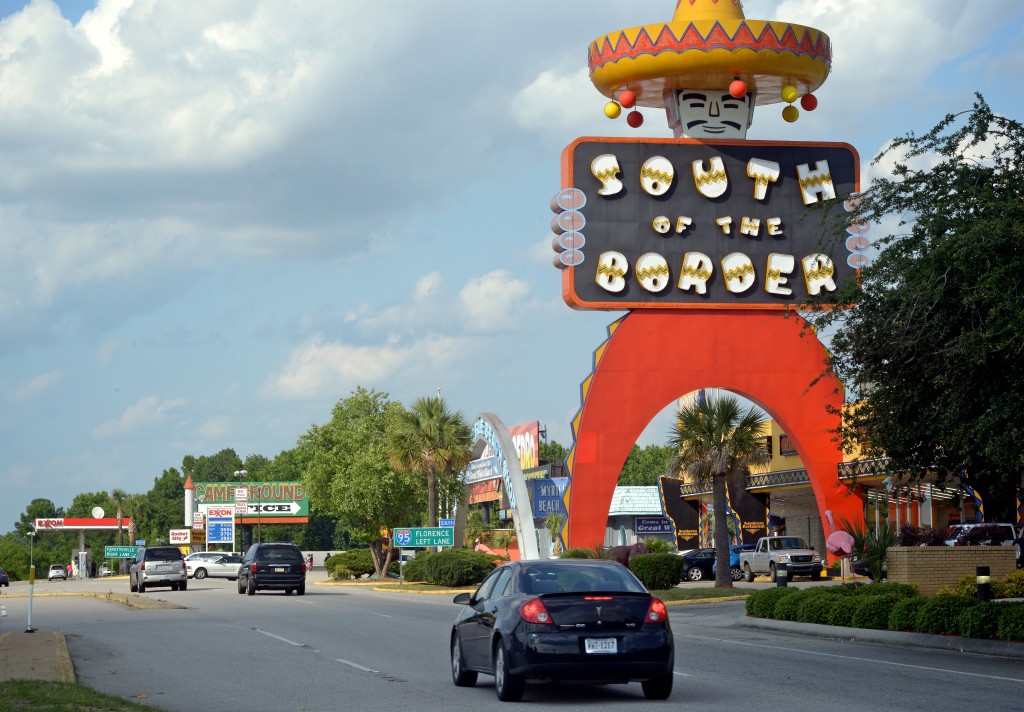
Sombreros over the South: What a perfect metaphor for the Mexicans who live here, aliens in their new home.
Summer, 2014. My wife and I visit a Mexican restaurant on a Friday night in Kentucky cave country. There’s a twenty-minute wait, so we stare in awe at the crowd: all white, their tables laden with fajitas, nachos, and canteen-sized margaritas. And we stare at a booth where friends and family sing “Happy Birthday” to a college-age woman as the restaurant staff crowns her with…a sombrero.
There are no debates about cultural respect or appropriation; tonight, everyone is a Mexican. That’s the magic of the sombrero—and its harm. As Mexicans have migrated to the South over the past twenty years, too many folks reduce us to a seemingly silly hat.
The first time I had an inkling that raza lived in el Sur was in 2008, when a young man with a twang rang up my purchase at a video-game store in Orange County, California. I bought the Xbox 360 version of NCAA Football 08, the one with former Arkansas Razorbacks legend Darren McFadden on the cover. The clerk said his favorite team was the Auburn Tigers. When I told him that Mexicans were only allowed to root for UCLA, USC, and maybe the Texas Longhorns, he said that wasn’t the case for Mexicans in Alabama. “There are Mexicans in Alabama?” I asked, incredulous.“Yep,” he said proudly, adding a “War Eagle!” for good measure, along with some harsh words about Nick Saban.The time of treating Mexicans in the South as a novelty—a sombrero!—is over. A twenty-first-century Great Migration of Latinos to the region is forging a new identity. Call it Sur-Mex: simultaneously of the South and Mexican, with the hyphen representing not a division but a conduit over which to exchange traditions. I’ve written much about how non-Latinos in the South endorse Mexicans through our food, always asking for more of the authentic stuff (breakfast burritos from a roadside stand in Grimsley, Tennessee? Sure!). But far more accepting are the Mexican children who grow up Southern. From Louisiana to the Florida Panhandle, the Ozarks to Appalachia, these kids absorb regional identities, from accents to pickup trucks, and create new ones firmly rooted in the land. I’ve even heard Chicano college students in Kentucky proudly call themselves “Appalachicanos.”
This is happening despite politicians who do everything possible to make the lives of these young people and their parents miserable. A great many of them are undocumented, or come from families with at least one family member without papers. And still they become Southern.
Outside of the South, Latinos also think of the Sur-Mexican as novelty. Place any good ol’ chico or chica anywhere else in the United States or Mexico, and they’ll have two strikes against them, as Mexicans and Southerners. Ni de aquí, ni de allá, as the saying goes—neither from here nor there. It just doesn’t compute for the rest of us that Mexicans would ever find paradise in the South, far from the comfort of the Southwest. Yet they go, drawn by a beautiful way of life and oppor-tunities ripe for the taking.
So far, Mexicans have done most of the work of forging a Sur-Mex culture. Now it’s time for native Southerners to go beyond the sombreros. Teaching Mexicans the lay of the tierra is essential—the music, the cuisine, the cults of Ale-8-One and bluegrass, of Dusty Rhodes and mirliton (which we call chayote). In turn, Southerners can learn from Mexicans; loving the food is a good start. Learn, too, the importance of immigration reform, the glories of our musical rhythms, the community festival that is a quinceañera, or the genius of trucker movies (on that note, organize a Smokey and the Bandit marathon and pair it with the Mexican cult classic Lola la Trailera—Lola, the Truck-Driving Woman).
It won’t hurt y’all to learn a bit of español, either. I do my bilingual part in this columna, but start listening to any local Spanish-language radio stations, or watch your Univisión channel. And, like Gullah and Cajun and the Native American languages that gave names to rivers, cities, counties, and mountains, let Spanish seep into the Southern vernacular. It already has in Louisville, where Latino students have added a new entry—“Lubo”—in the lexicon of ways to pronounce the Derby City’s name. Say it out loud: Gustavo Arellano is the editor of OC Weekly and the author of Taco USA: How Mexican Food Conquered America. He presented a version of this piece at the 2015 Southern Foodways Symposium. “Lubo.” Makes as much sense as “Loo-vuhl,” no?
And if Southerners don’t embrace Mexicans? We’ll do fine—we’re a surviving lot. But then Mexicans won’t bother to fully bond with Southern culture. The youngsters who are the future will migrate away, turned off just like hundreds of thousands of folks, black and white, in previous generations. Mexicans want to be part of the South, they really do. Now, it’s up to Southerners to listen and let them join.
Heavy lies the sombrero, oh wonderful South. Are ustedes ready to wear it?


